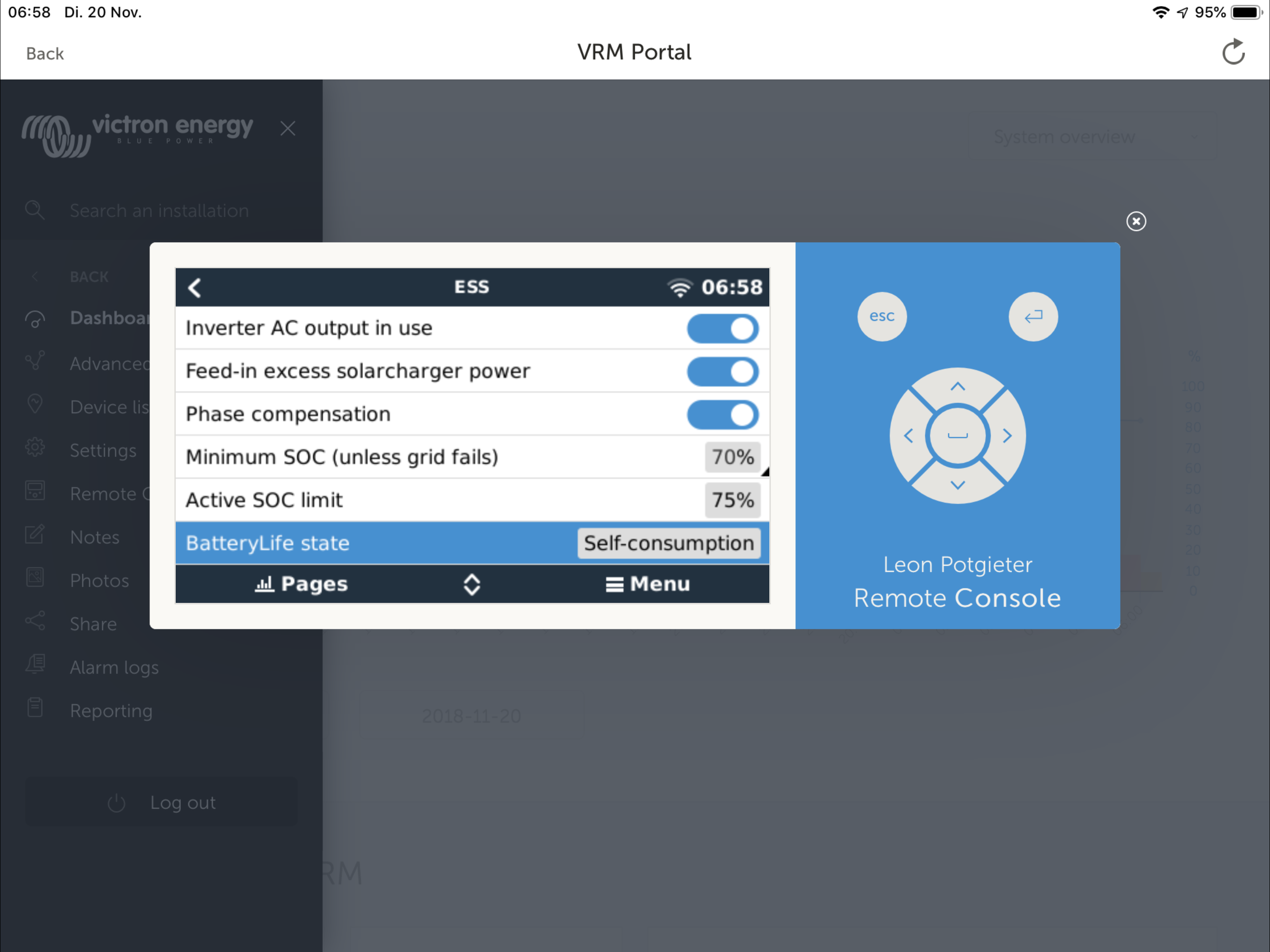Is there a possibility To control when the batteries will be charged by the solar, maybe a specific time or when PV is that the specific high. The batteries is currently being charged in the morning as soon as PV is available and is not used by the grid I will have excess pv later in the day then The batteries can be charged
Thanks


 Here is my screenshot this shows that the batteries is not less thanthe SOC? Really don’t understand why it’s charging the batteries
Here is my screenshot this shows that the batteries is not less thanthe SOC? Really don’t understand why it’s charging the batteries 